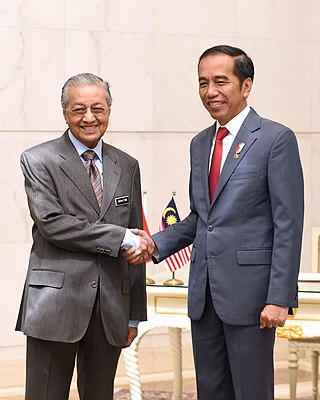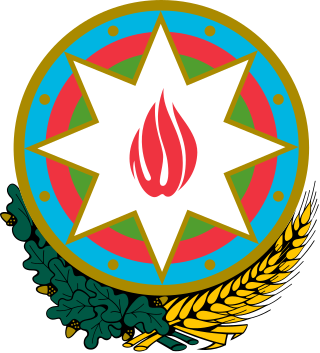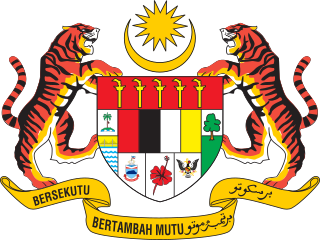
Since independence, Indonesian foreign relations have adhered to a "free and active" foreign policy, seeking to play a role in regional affairs commensurate with its size and location but avoiding involvement in conflicts among major powers. During the presidency of Sukarno, Indonesia's foreign relations were marked by engagement with other newly independent nations in Asia and Africa, as exemplified by the Bandung Conference, the subsequent foundation of the Non-Aligned Movement and a confrontational attitude towards Western powers, justified by a belief in the CONEFO and opposition to what Sukarno termed as NEKOLIM.

Delia Domingo Albert is a Filipina career diplomat who served as the first female and 23rd Philippine Secretary of Foreign Affairs from December 22, 2003 to August 18, 2004. She was also the first woman career diplomat to serve as foreign minister of a Southeast Asian country.

In the United States Government, the Bureau of East Asian and Pacific Affairs is part of the United States Department of State and is charged with advising the Secretary of State and Under Secretary of State for Political Affairs on matters of the Asia-Pacific region, as well as dealing with U.S. foreign policy and U.S. relations with countries in the region. It is headed by the Assistant Secretary of State for East Asian and Pacific Affairs, who reports to the Under Secretary of State for Political Affairs.

The Department of Budget and Management is an executive body under the Office of the President of the Philippines. It is responsible for the sound and efficient use of government resources for national development and also as an instrument for the meeting of national socio-economic and political development goals.

A Philippine passport is both a travel document and a primary national identity document issued to citizens of the Philippines. It is issued by the Department of Foreign Affairs (DFA) and Philippine diplomatic missions abroad, with certain exceptions.
Rosario Manalo, is a Filipino career diplomat, political scientist, and educator in the Philippines. She is the Special Representative of the Philippines to the ASEAN Intergovernmental Commission on Human Rights and has served as undersecretary of Foreign Affairs in charge of International Economic Relations from 1997 to 2001. Moreover, she has served as Philippine ambassador to Sweden, to France, to Belgium and to the European Economic Community.

Ministry of Foreign Affairs of Azerbaijan is a Cabinet-level governmental agency of Azerbaijan Republic in charge of conducting and designing the country's foreign policy.

The Ministry of Foreign Affairs of the Republic of Belarus is the Belarusian government ministry which oversees the foreign relations of Belarus.

The Ministry of Foreign Affairs, abbreviated KLN, is a ministry of the Government of Malaysia that is responsible for foreign affairs, Malaysian diaspora, foreigners in Malaysia, diplomacy, foreign relations, counter terrorism, bilateral affairs, multilateral affairs, ASEAN, international protocol, consular services, maritime affairs, and chemical weapons. It is currently based in Putrajaya. It is also widely known as Wisma Putra, which is also the name of its building in Putrajaya.

The presidency of Fidel V. Ramos, also known as the Ramos administration spanned for six years from June 30, 1992, to June 30, 1998. Ramos is the first Protestant president of the country, and the first Christian Democrat to be elected, being the founder of Lakas-CMD. He was included as one of the most influential leaders and the unofficial spokesman of liberal democracy in Asia.

The Ministry of Foreign Affairs of the Republic of Indonesia or commonly known by its abbreviation Kemlu, is an Indonesian government ministry responsible for the country's foreign politics and diplomacy. The ministry was formerly known as the Department of Foreign Affairs until 2008 when the nomenclature changed with the enactment of the 2008 State Ministry Act.
The visa policy of the Philippines is governed by Commonwealth Act No. 613, also known as the Philippine Immigration Act, and by subsequent legislation amending it.

The Philippine Overseas Employment Administration was an agency of the government of the Philippines responsible for opening the benefits of the overseas employment program of the Philippines. It is the main government agency assigned to monitor and supervise overseas recruitment and manning agencies in the Philippines. The POEA's office is located at EDSA corner Ortigas Avenue, Mandaluyong, Philippines.
Gawad Mabini is an honor given by the President of the Republic of the Philippines.

The Embassy of the Philippines in Warsaw is the diplomatic mission of the Republic of the Philippines to the Republic of Poland. It is located on ul. Stanisława Lentza 11 in the Wilanów district of south Warsaw, near the Wilanów Palace. Although the current embassy dates from 2009, the Philippines also maintained a previous resident embassy in Poland in the early 1990s.

The Embassy of the Philippines in Tel Aviv is the diplomatic mission of the Republic of the Philippines to the State of Israel. Opened in 1962, it is located on 18 Bnei Dan Street in the Yehuda HaMaccabi neighborhood of central Tel Aviv, across from Yarkon Park.

The Embassy of the Philippines in Beirut is the diplomatic mission of the Republic of the Philippines to the Republic of Lebanon. Opened in 1996, it is currently located at the W Building on Rue Mar Geries in the southern Beirut suburb of Hadeth, part of the Baabda District in the Mount Lebanon Governorate.

The Department of Migrant Workers is the executive department of the Philippine government responsible for the protection of the rights and promote the welfare of Overseas Filipino Workers (OFW) and their families. The department was created under the Department of Migrant Workers Act that was signed by President Rodrigo Duterte on December 30, 2021. The functions and mandate of the Philippine Overseas Employment Administration (POEA) will serve as the backbone of the department and absorbing the seven offices of the Department of Labor and Employment (DOLE) and Department of Foreign Affairs (DFA) namely the Office of the Undersecretary for Migrant Workers' Affairs (OUMWA) of the DFA, Philippine Overseas Labor Office (POLO), International Labor Affairs Bureau (ILAB), National Reintegration Center for OFWs (NRCO) and the National Maritime Polytechnic (NMP) of the DOLE. The Overseas Workers Welfare Administration will serve as its attached agency and the DMW secretary will serve as the concurrent chairperson of OWWA.


















